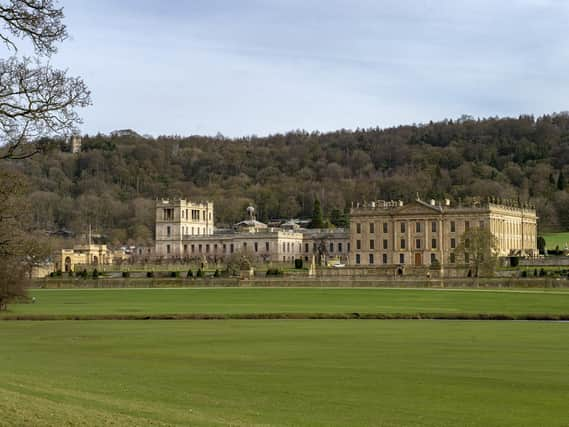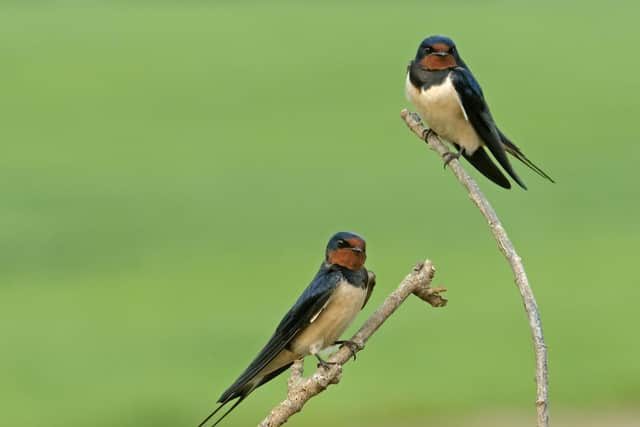Chatsworth House urged to remove anti-swallow and nesting nets from sculptures


Derbyshire Wildlife Trust said the issue was “urgent”, as swallows had already started to return from Africa after migrating thousands of miles, with housemartins following behind, and that the nets risked injury and death to the birds.
The wildlife trust said: “These birds have been nesting at Chatsworth House for hundreds of years, a fact that should be cause for celebration.”
Advertisement
Hide AdAdvertisement
Hide AdThe latest controversy follows protests last year over the netting of cliffs at Bacton, Norfolk, and more recently over nets put up over hedges ahead of roadworks on the A19.


The Chatsworth House Trust was granted planning permission by the Peak District National Park Authority to erect netting on the 1st Duke's House to protect friezes containing garlands, serpents and cherubs.
Birds had also nested in the lions’ mouths on the East and North fronts and in soffits on all four elevations.
The aim of the netting, the original plans stated, was to improve the appearance of recently conserved 17th century sculpture and prevent bird fouling and “soiling of external furnished spaces used by the family”.
Advertisement
Hide AdAdvertisement
Hide AdTim Birch, of Derbyshire Wildlife Trust, said the birds were very “sight faithful” and would return directly to the spot they had nested in last year.
He said: “I think people recognise more and more that nets are not an acceptable way of dealing with these issues.”
The trust said 11 nesting sites had been identified, some belonging to swallows and others likely to be housemartins’ nests.
It had installed a dozen swallow nesting cups and a dozen housemartin nests on other parts of the house.
Advertisement
Hide AdAdvertisement
Hide AdAlthough no evidence of swift nests was found, three new double swift boxes had been installed.
A statement added: “All these actions were taken to protect both the Grade 1 listed building and the habitat of nesting birds.”
It said the estate had a "wonderful level of biodiversity", adding: "We continue to work to preserve out natural heritage and support wildlife, as we have for generations."
The National Park Authority said they had recognised "the netting would inherently reduce nesting on the affected façades" but there were other nesting locations available nearby.
Advertisement
Hide AdAdvertisement
Hide AdThey had approved a mitigation scheme, which was expanded in April, to include housemartins, which also may be affected by the netting.
It added that Chatsworth House had confirmed they will monitor netted areas to assess any impact on wildlife.
Comment Guidelines
National World encourages reader discussion on our stories. User feedback, insights and back-and-forth exchanges add a rich layer of context to reporting. Please review our Community Guidelines before commenting.